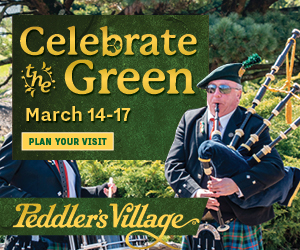On Sunday night, June 30, as I write this, we’re in the waning hours of Pride Month 2019. There’s still confetti, glitter and the ruined remains of corporate handouts stuck in the nooks and crannies of the road, though much of it has already fallen victim to the machines of the Department of Public Works.
Pride has been put away for another year.
That said, much like the crushed and crusted items lining the gutter, the questions this Pride raised still linger. Like everything else in 2019, Pride proves the heart with unanswered questions.
This year marks the 50th anniversary of a summer night at the Stonewall Inn in New York’s Greenwich Village. The stories of that night, like any yarn, have grown over the years, with many people claiming their own narrative.
What we do know is this: The police, as they have many times before, raided the bar, practicing yet another shakedown for cash. Regulars weren’t happy, and after some ill treatment by officers, hit a flashpoint. Things were thrown. It soon boiled over into a riot between the LGBTQ people present at the Stonewall — as well as many others in the neighborhood — and the local police.
Among those to have been at Stonewall include Marsha P. Johnson and Sylvia Rivera, both presumably transgender or gender nonconforming — in modern parlance — people of color. Also, there was Stormé DeLarverie, a mixed-race butch lesbian who scuffled with the police.
Other events came before the Stonewall Rebellion, but this was the one that caught the public’s imagination. A year after the riot, a parade was held to honor it. That parade was the progenitor of every Pride parade to come, but it didn’t take long for things to go south.
By the early 1970s, people began to press for changes in Pride. Drag was frowned upon, and at the time this firmly included all things transgender or otherwise genderfluid. Kink and BDSM were no-nos. Really, the goal was an event that felt as strait-laced as your annual 4th of July parade, with the added wrinkle that all participants were gay or lesbian.
This attitude has ebbed and flowed over time. Transgender people were pretty firmly back in the fold after the 1980s leather and other such things.
At today’s event, my own very informal count saw a bit less than 10 percent of the crowd displaying a transgender flag, including yours truly. Likewise, genderqueer flags were plenty visible, as well as other gender-related flags, mixed with a healthy smattering of bi and pan flags and many other variants among the sea of rainbows.
Perhaps the only thing more common than trans-related pride goods this year were corporate logos.
I marched with the Transgender Law Center, except it wasn’t just the Transgender Law Center, as Levi’s sponsored TLC. My partner, sequestered at the end of the parade, walked with her own employer. In between us was everything from entries by the local police, Dropbox, REI and any number of other companies. There were big, loud contingents, occasionally broken up by smaller noncorporate contingents.
I’m not going to dwell on the corporations, though I think their involvement is a symptom, not a cause. To me, if a company wants to bring their LGBTQ employees to Pride, that’s fine. If they want to show support regardless, also cool.
That said, a lot of companies only appear to be interested in Pride for the money they can wring out of the community — money they may turn around and give to LGBTQ-hating politicians in order to further their business goals — but I digress.
On the evening of the 50th anniversary of the Stonewall Rebellion, according to eyewitness reports, a transgender woman of color entered the Stonewall Inn, then full of revelers. She wanted to speak about transgender people who had been murdered out in the streets.
Patrons were unhappy. They initially did not want her to speak, even as some moved to protect her. Many jeered her, while others demanded her removal — even suggesting the police be called to remove her.
Pride is changing. It is not a monolithic event that is and will always look the same. Its makeup is moving toward something very different from the white-dominated “gay rights” themed events of the 1970s into an event that centers people of color and sexual orientations between the poles of “man” and “woman.”
For some, this event that was borne out of a day when gender nonconforming, queer people of color stood up to the police that were oppressing them because their gender and sexuality was simply becoming too radical.
Stormé, Marsha, and Sylvia are gone. Many others who were there that night are fading away. Yet is the movement they helped birth reflective of what they faced, and what they did in reaction?
Our Pride should be for all who need it and should center those most in need. It is not an event where companies, let alone police, should step in expecting praise for what they may have done to help LGBTQ people; let it be a moment when they atone for their failure to serve LGBTQ people as they rededicate themselves to how they will rectify these issues going forward.
If the radical spirit of Pride today doesn’t sit well with you, then perhaps it is no longer the event for you. Enjoy your privilege while others try to get things done. n
Gwendolyn Ann Smith thinks it’s time for pride to face a rebirth. You’ll find her at www.gwensmith.com
